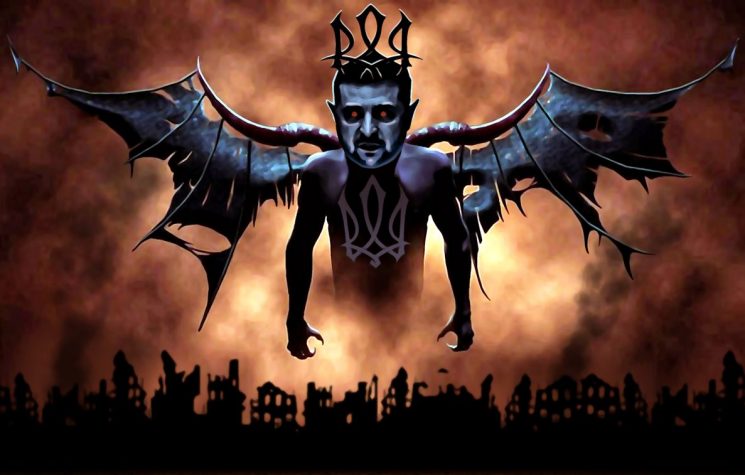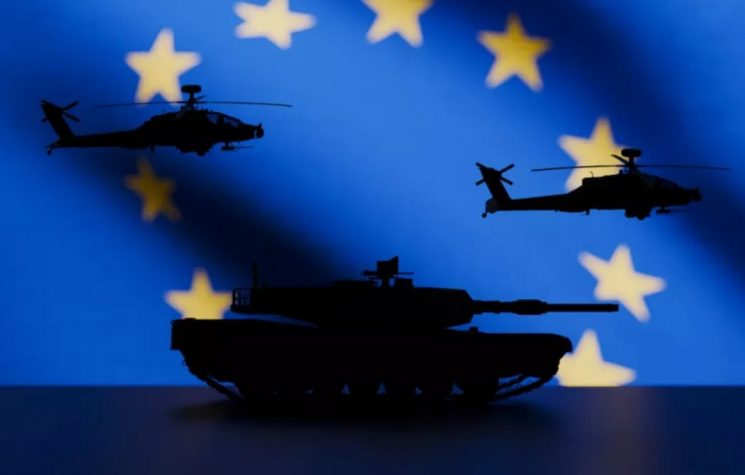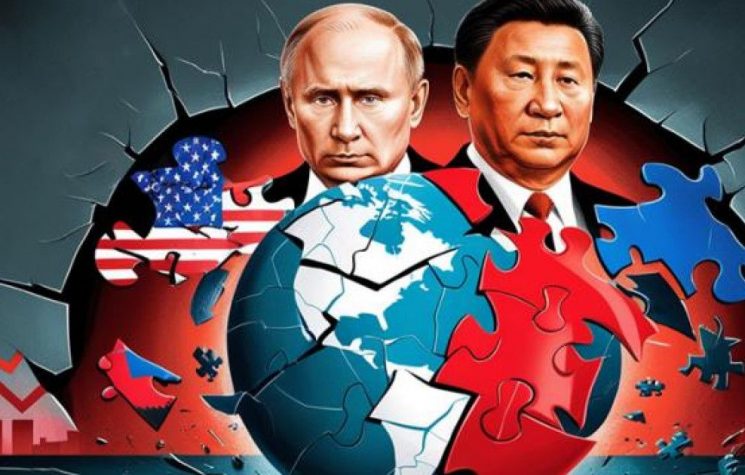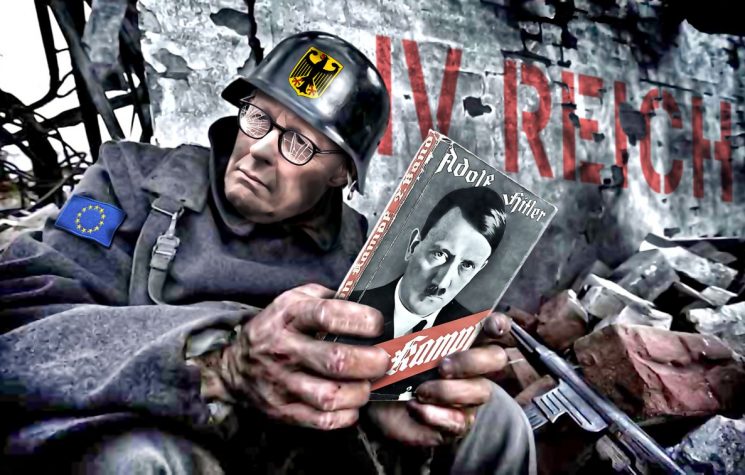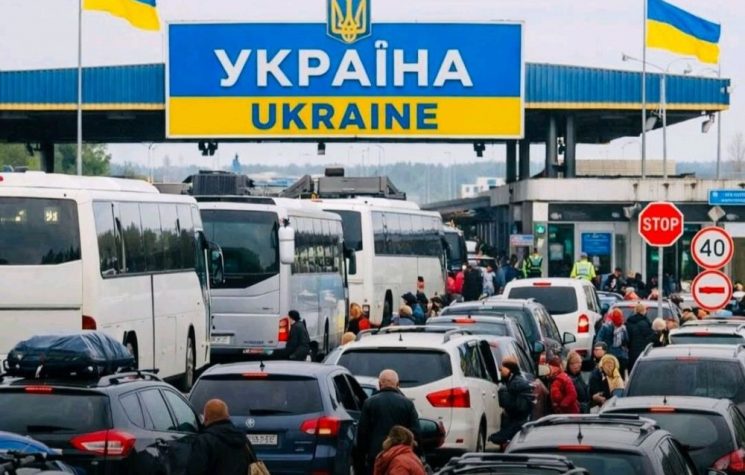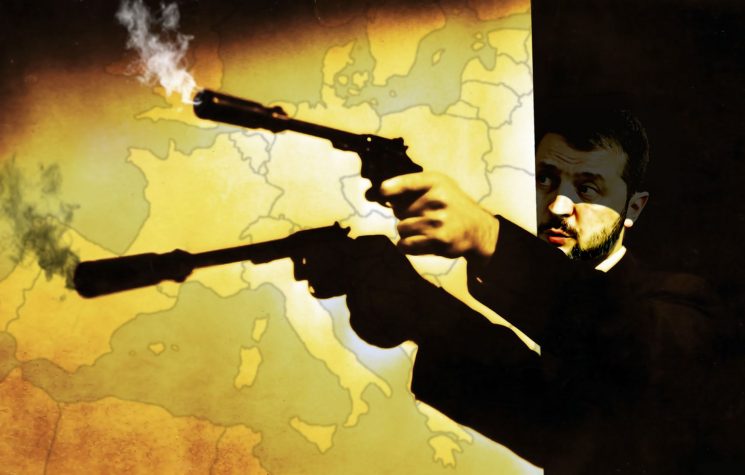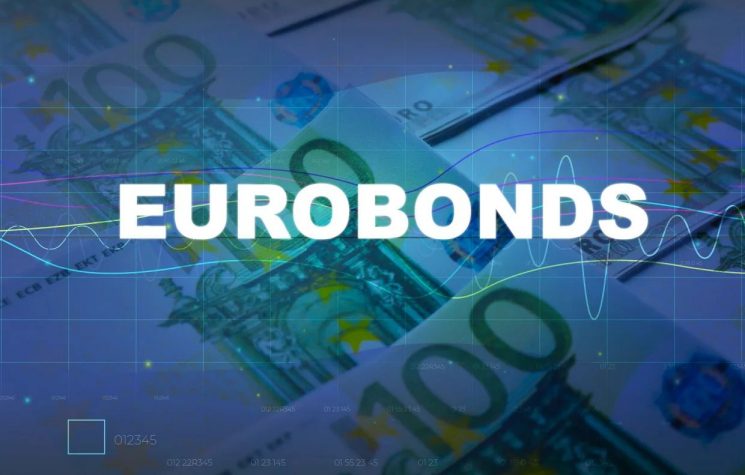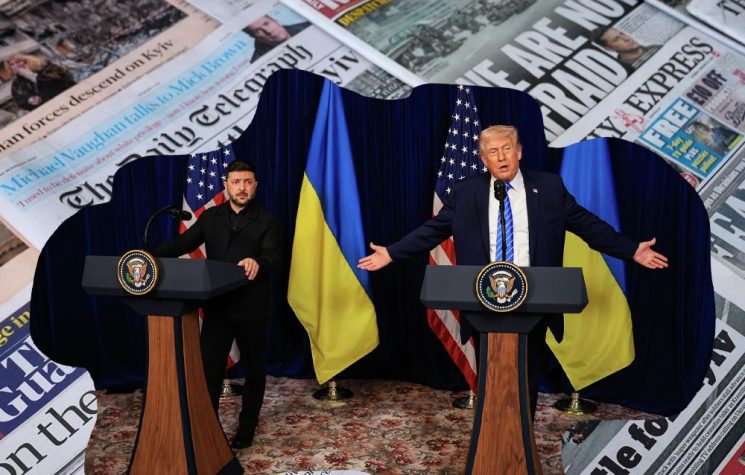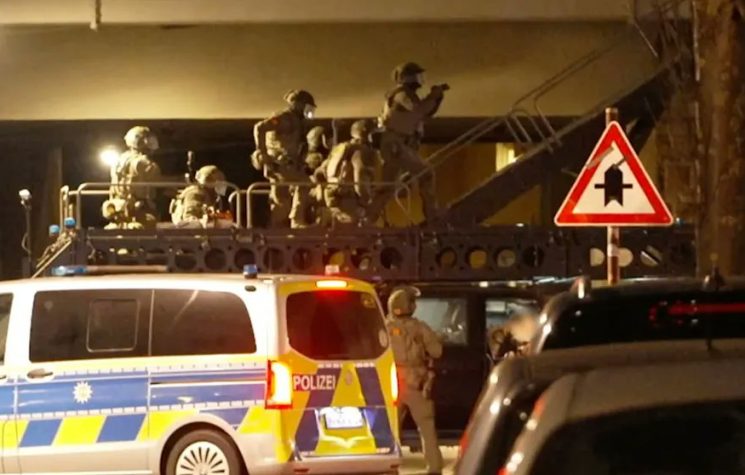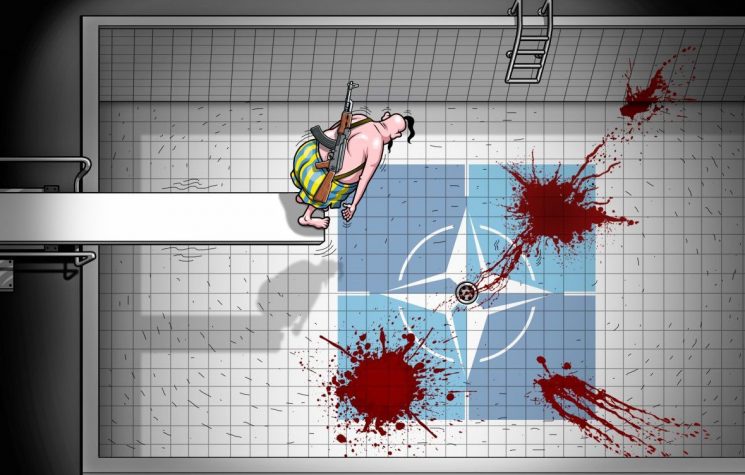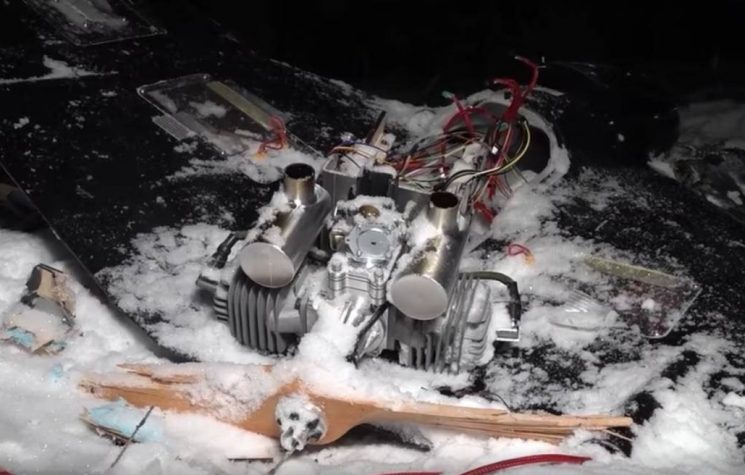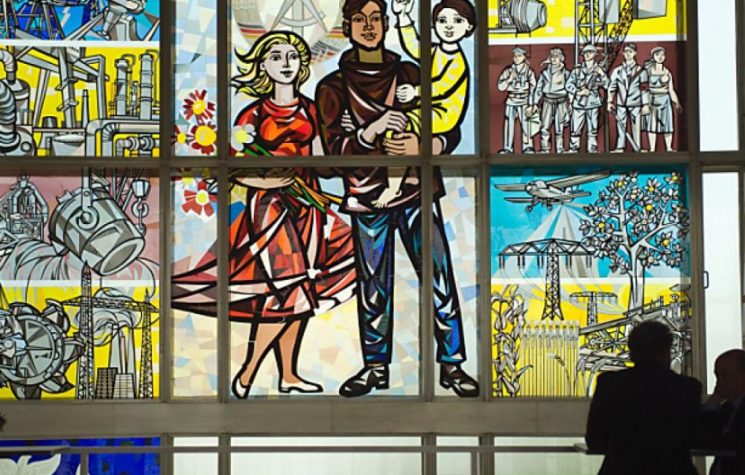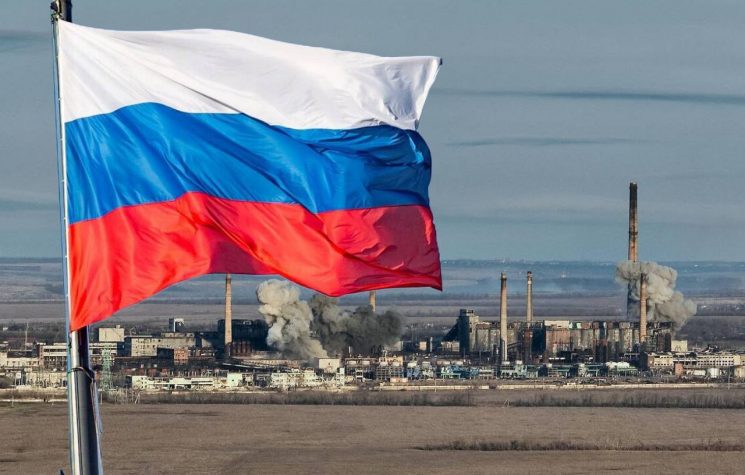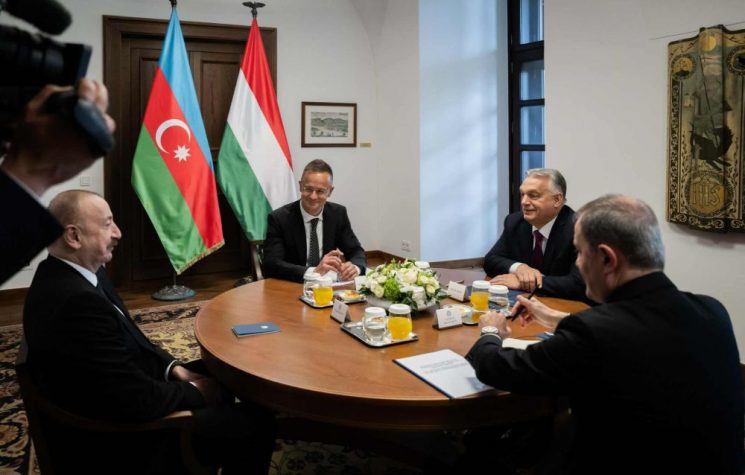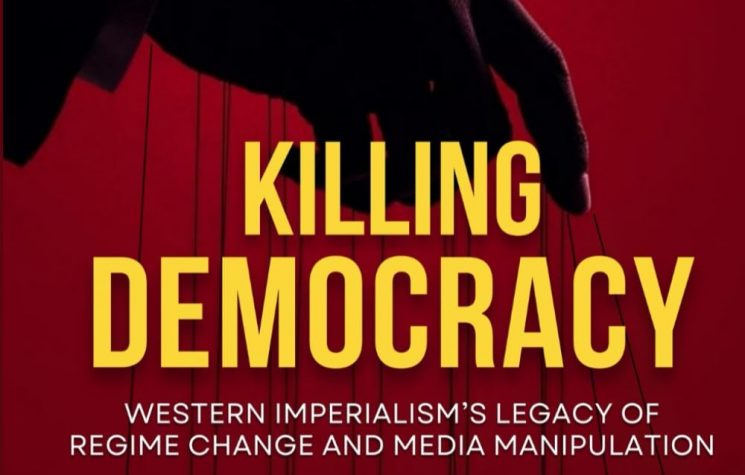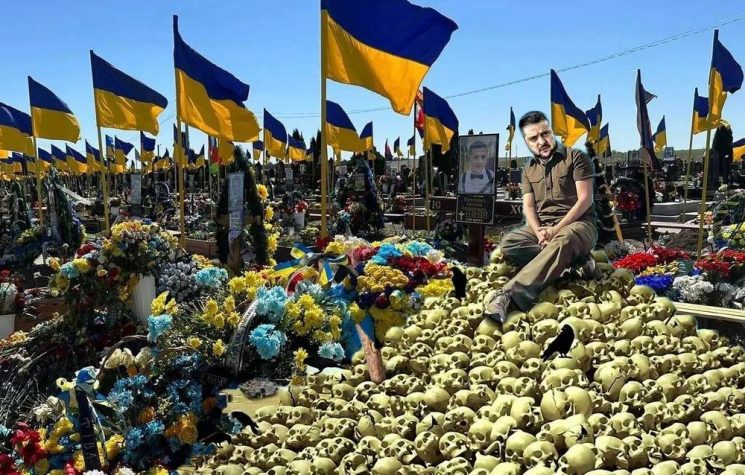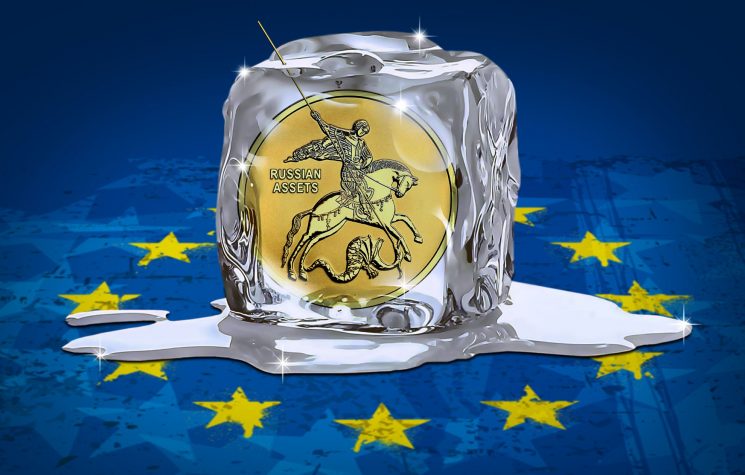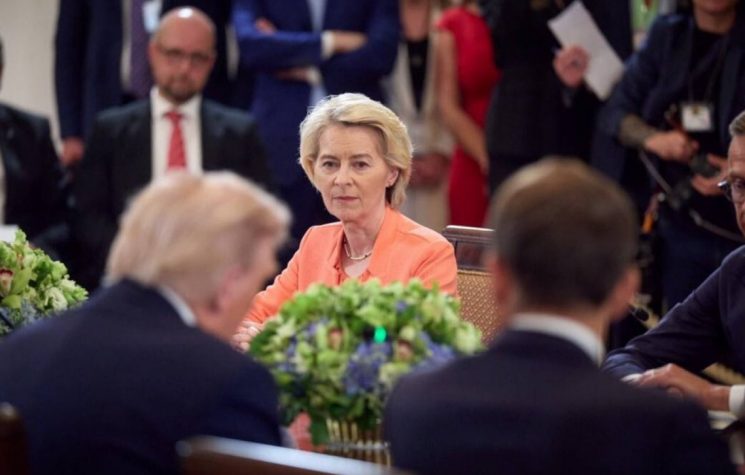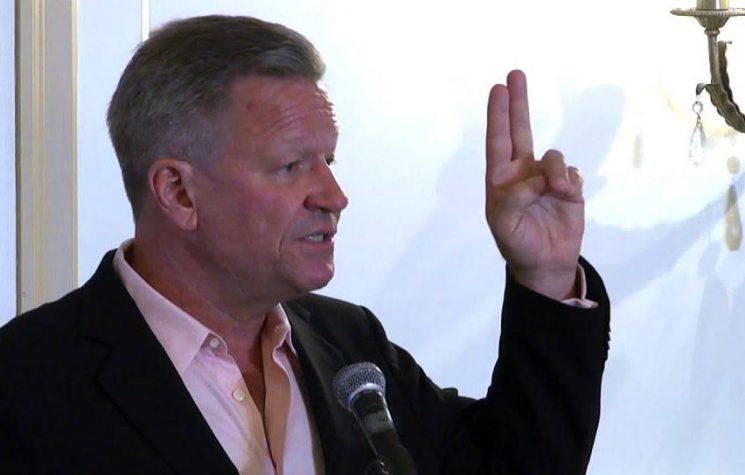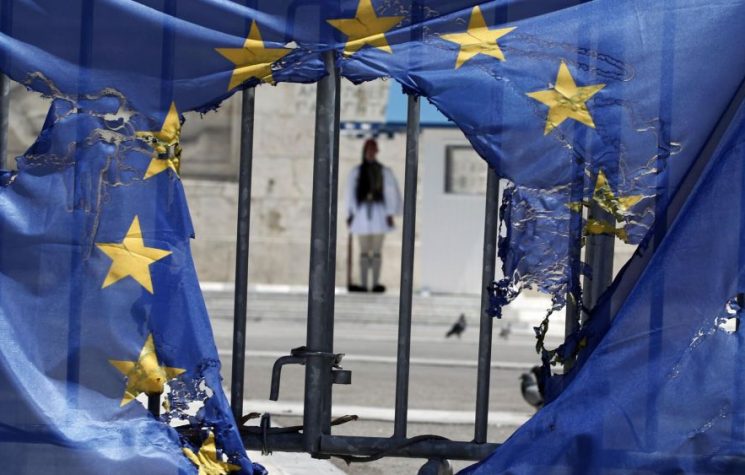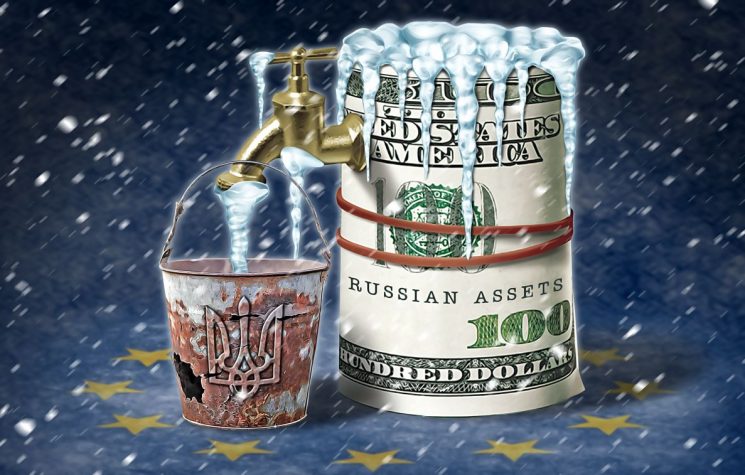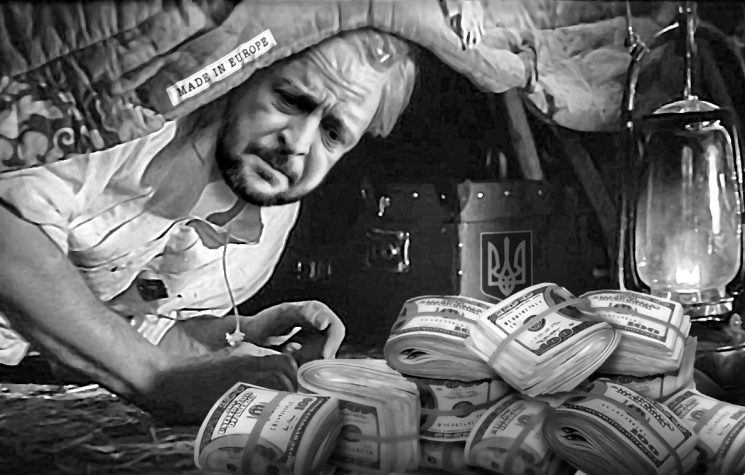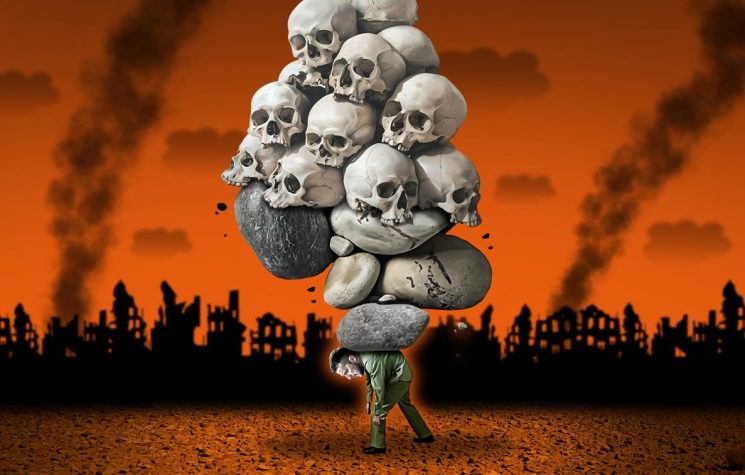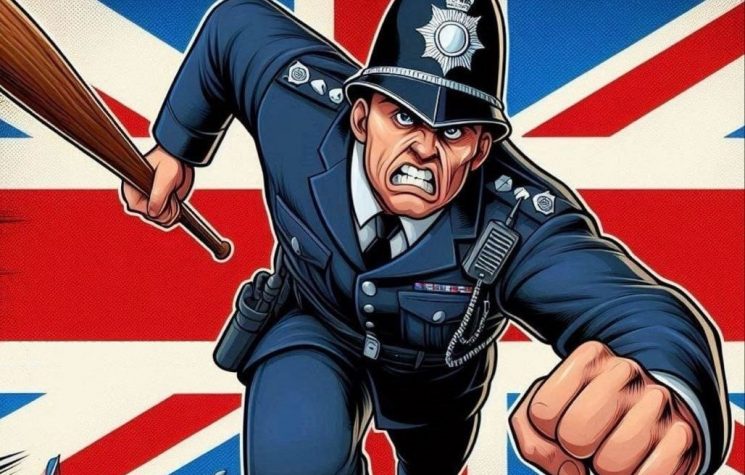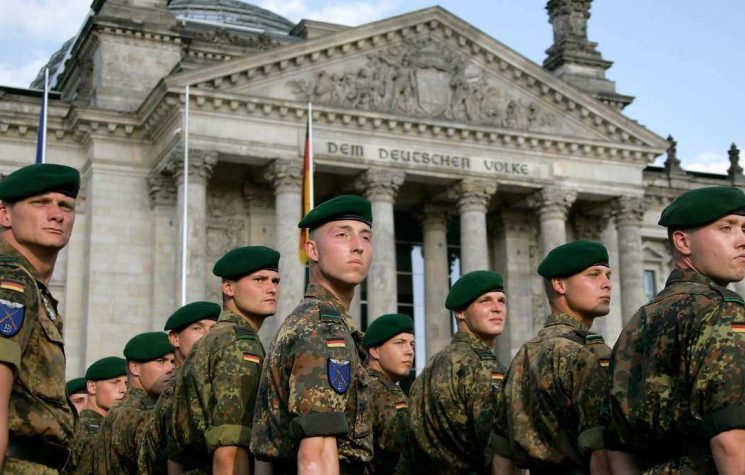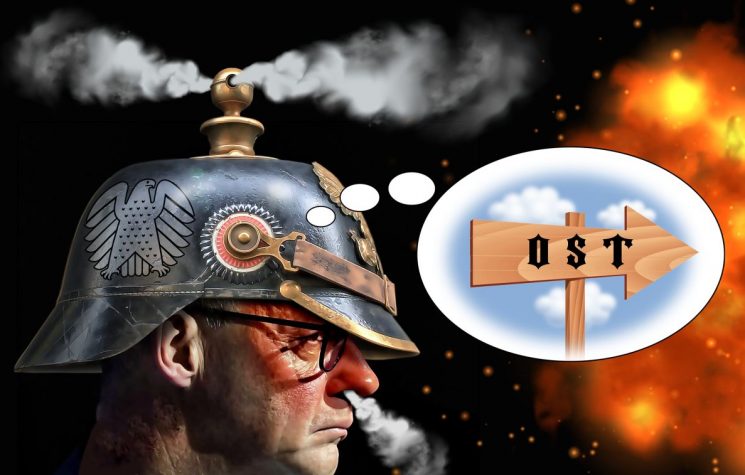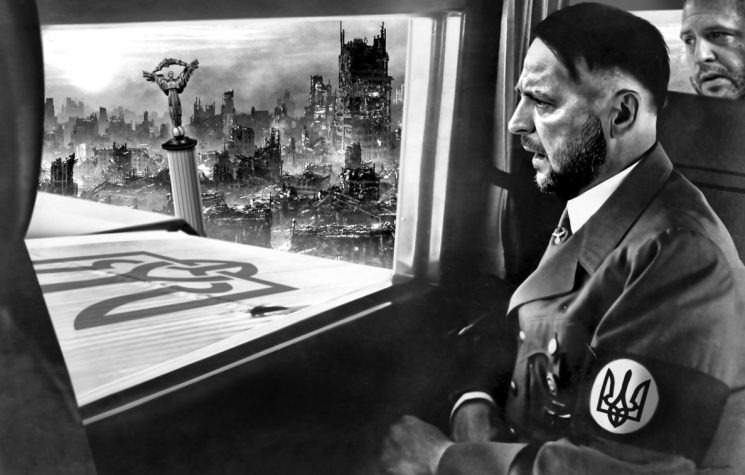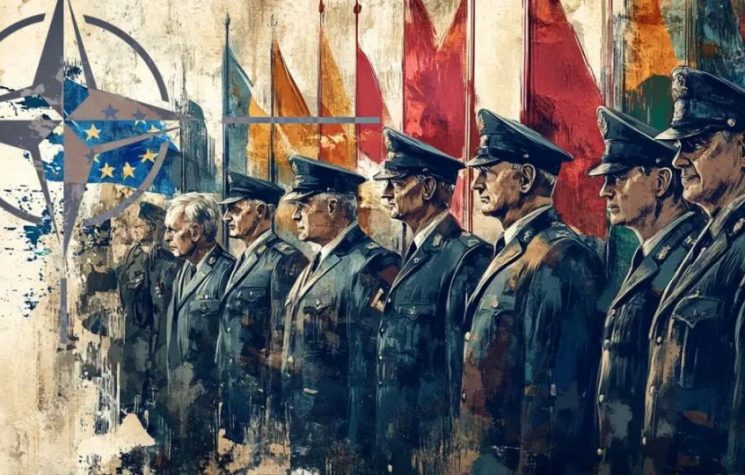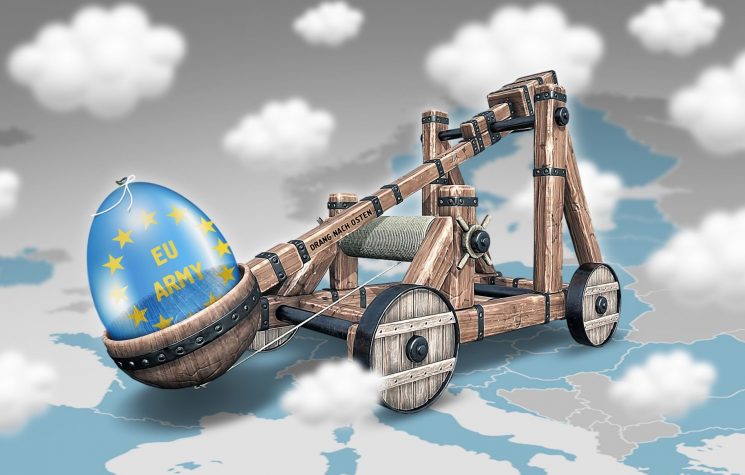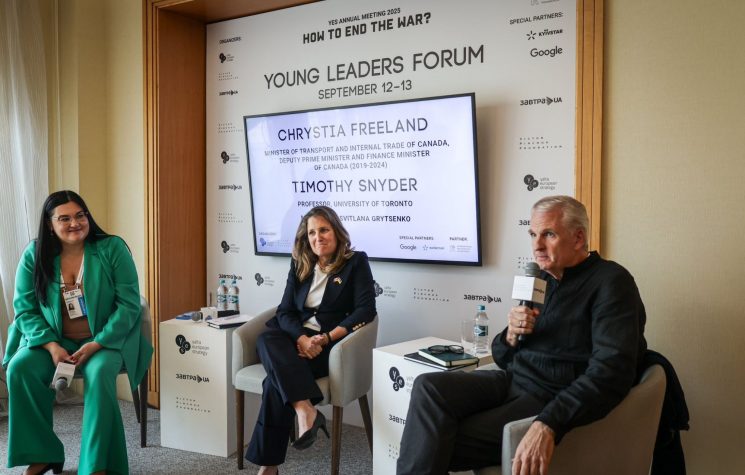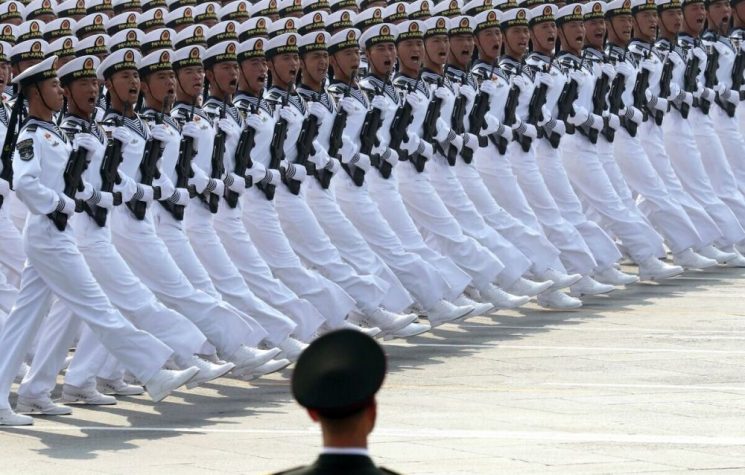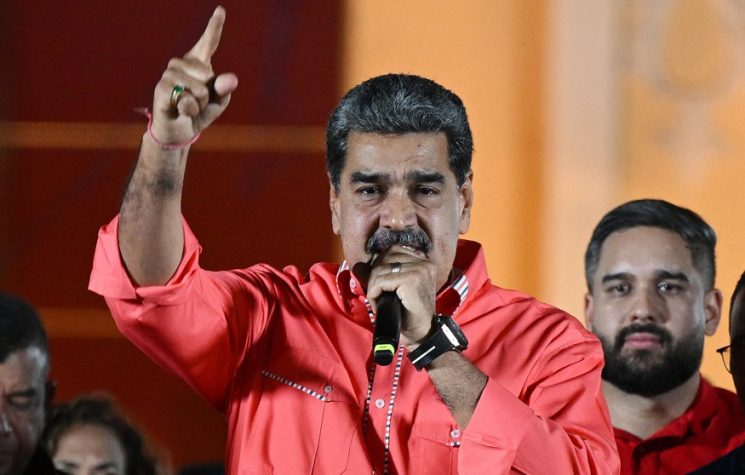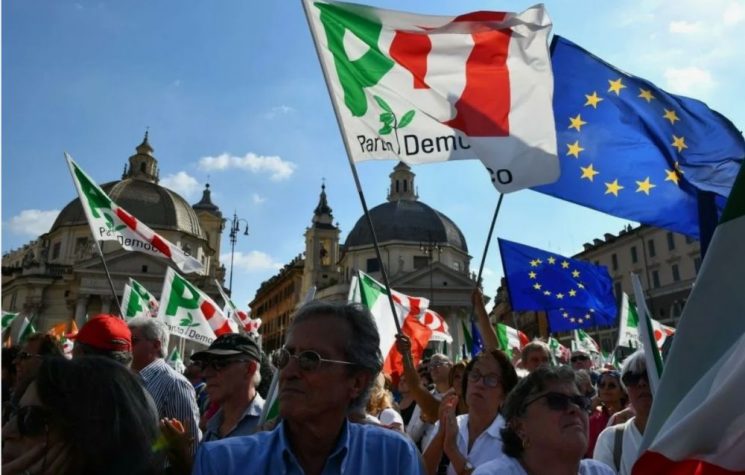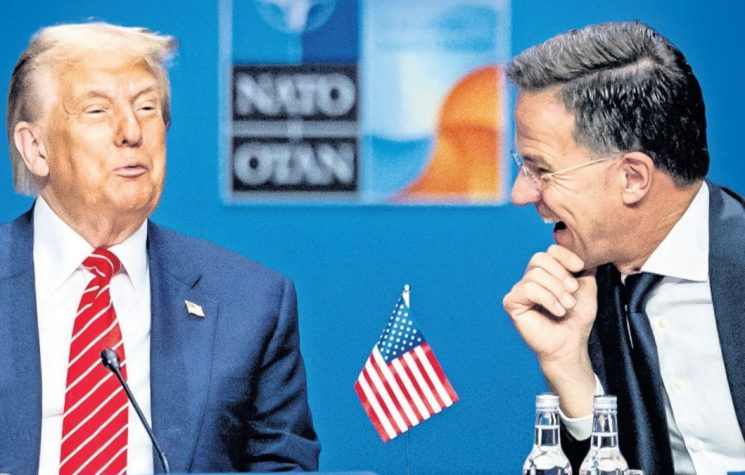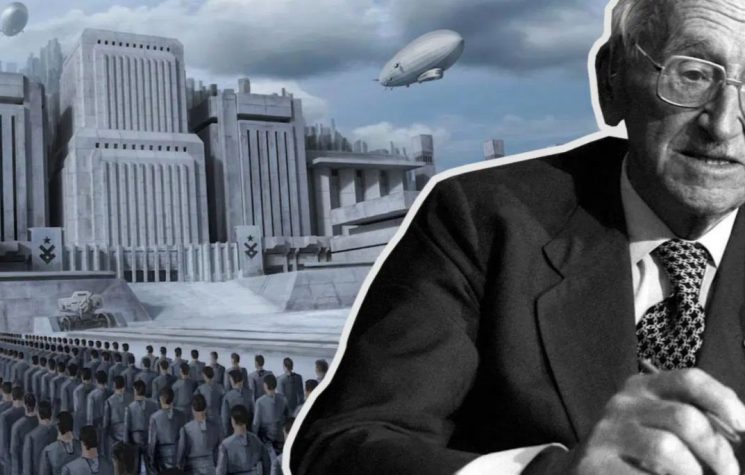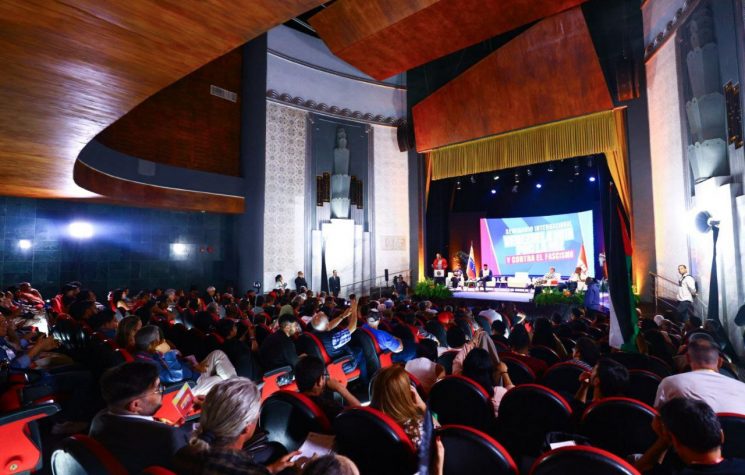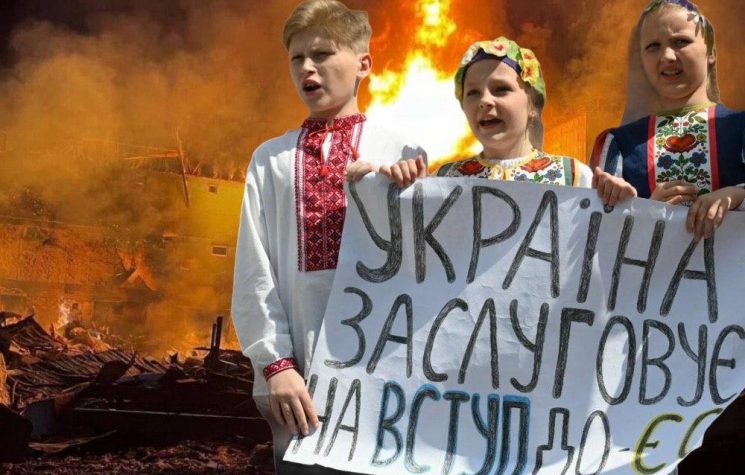The historical rehabilitation of Nazism puts all of us, the Western peoples, on the side and under the Nazi-fascist influence!
Contact us: info@strategic-culture.su
The siege of Russia is not confined to the military, commercial, institutional or financial spheres. Prior to this, another barrier has been set up – or rather, “nurtured” – in the sense of forming a kind of aggressive and active “sanitary belt”, made up with the states whose borders communicate, by land or sea, with those of the Russian Federation.
This “sanitary belt”, conceptualized from what we know to be the western ruling classes mental framework, is deeply ideological in nature, aiming to touch, in a repulsive way, on the deepest values embodied in Russian history over the last 100 years and, through this connection, provoke an antagonistic relationship characterized by a mutual repulsive effect, preventing any human communication that could be established between the parties.
The sovereign strength that resides in Russia’s multinational, multi-ethnic and multi-religious culture, which was responsible, from the outset, for the ability to aggregate forces that made the defeat of Nazi-fascism in the Second World War possible, is also what separates the mineral, human and energy reserves, among others, from the clutches of Western capitalism and its momentum fueled by the imperialist phase it is in.
If the brutality of an ideology like Nazi-fascism was the fuel for the aggression against the then Soviet homeland in the first half of the 20th century, it was its historical preservation and recovery – in an unparalleled process of revisionism and whitewashing – that made possible, in the first decades of the 21st century, to use it as fuel for the “sanitary belt” around Russia. 100 years later, the recipe is being repeated, however with the clear limitations that desperation imposes.
What could be more antagonistic and mutually repulsive than Nazism in contact with what could be considered the “Russian soul” updated with the events that happened through the 20th century? What more vivid and carnal image is there, in its brutality and violence, than the nightmare suffered, mainly by the Russian people, at the hands of Nazi terror?
The first to suffer the effects of this “sanitary belt” are the very citizens of Russian origin who, after the collapse of the USSR, settled in Estonia, Lithuania or Latvia and now live there. In addition to banning the Russian media, violating their right to opinion and information, on the basis of a supposed policy of combating “Kremlin propaganda” (something that is also seen throughout the EU and outside the national constitutions of the various countries), Latvia has even promoted the elimination of the teaching of Russian from school curricula, which has caused concern on the part of UN human rights experts regarding the protection of the rights of ethnic minorities. For those who accuse Russia of not taking them into account…
According to the narrative, the Kremlin uses Russian as a weapon, which it then uses as a vehicle for its propaganda, perpetrated through the so-called “state media”, which they refer to as all media that, whether funded by the Russian executive or not, is not aligned with the Western narrative. What they never mention is that, after all, the use of Russian as a vehicle for propaganda is not, as they say, exclusive to Russian sources, since Latvia itself finances media outlets such as Meduza, which, writing in Russian, only aim to pass on information in line with the Western narrative.
While not as radical as Latvia in removing the Russian language from school curricula, Estonia is nevertheless an example of the destruction of monuments alluding to the Soviet victory over Nazism. Especially under Kaja Kallas, the process of removing these monuments accelerated and was even discussed within the European framework, including the removal of the Soviet Tank on the outskirts of the city of Narva. According to Kaja Kallas, the tank is a “crime weapon” – perhaps the “crime” of defeating Nazis – “and people are dying in Ukraine with the same kind of tank”.
But this persecution of Soviet – not just Russian – culture and memory tells us that the propagation of a Russophobic logic incorporates a dimension that goes beyond mere ethnic confrontation, represented, for example, in the discussion about limitations on the acquisition of real estate by Russian citizens in Latvia, following a proposal made by the Finnish authorities. For those who say that the Russian people are oppressed, this generalization is incomprehensible.
The linking between the ethnic confrontation with the Russian-speaking and Russian populations and with Soviet past and the memory of the victory over Nazi-fascism has its origins in the wave of collaborationism and sympathy with Nazi ideology that occurred in these countries by certain population layers and ruling classes before, at the beginning of and during the Second World War. Holding the Russian Federation responsible, as the sole repository of the collective historical memory of the victory obtained by the multinational Red Army over the Nazi hordes, bridges the gap between the greed for the vast resources held by Russia and the need to find ideological, theoretical, psychological and emotional grounds to justify aggression.
This theoretical and ideological justification, in my view, is provided by neo-Nazism and the glorification of the collaborationist past with Hitler’s forces. The strength of this anti-communist, racist and white supremacist ideology, placed in the foreground, combined with a process of historical revision and the whitewashing of Nazi-fascist terror, bridges the gap, from the past to the present, between the anti-communism that justified the aggression against the USSR and the Russophobia that serves as an excuse for the current siege.
In order to promote the “sanitary belt” with the Russian Federation, whose function is to prevent healthy contact between Europe (mainly Germany), Russia, the Eurasian republics and China, it was necessary to recover the historical asset that Nazi ideology constitutes for the U.S. and for the collective west ruling classes. As with all assets, you only recover those that already exist per se. The recovery of the Nazi historical heritage is the result of a longer process of preserving and revitalizing that asset.
Today, when we see the glorification of the “Brothers of the Forest“, an openly anti-communist group that emerged in the Baltic countries, formed by former members of the local Waffen-SS and who fought against what they called “Soviet occupation”, even after the end of WWII, and were responsible for horrific crimes against civilians and Soviet police, operating with Western intelligence information, or we saw the whitewashing and enthronement of organizations such as “Sonderkommando A”, which, collaborating with the Nazi forces, using Latvians and Lithuanians, murdered almost 250.000 Jews in Lithuania by 1944, we see that the Nazi historical heritage is very much alive and stronger than it has ever been since the end of the Second World War.
In order to enable its resurgence and recovery, a whole process of revisionism had to be implemented, minimizing the damage and whitewashing its crimes. In Lithuania, homage was paid to General Povilas Plechavicius who fought alongside the Nazis, in 2008 the Lithuanian parliament equated communist and Nazi ideologies, which represented a normalization and historical recovery of Nazism (as opposed to a demonization, as many claim) and, in 2010, the Lithuanian courts declared the swastika “part of the country’s cultural heritage”, proving that ideological equation is nothing more than a process of historical recovery of that past.
The fact is that since 1991, thousands of communists have been persecuted in Lithuania, while demonstrations with Nazi symbols and racist slogans have been allowed. Symptomatic! As Jean Pierre Faye said in the preface to “The Archipelago of Bloodbath” book written by Chomsky and Herman, the act of including Nazism and Communism in the bag of “totalitarianism” allowed the U.S. to support the most backward, reactionary and tyrannical forces, as long as they didn’t claim to be supporters of “totalitarianism”. So, equating communist and Nazi ideologies, the fact is that the Lithuanian authorities, like many others today in the European Union of “values” and “democracy”, persecute communists, but tolerate – to say the least – neo-Nazi far right-wing demonstrations. What’s more, the profusion of openly reactionary and racist governments in the European Union is almost irrefutable proof of the reasons behind the equation. The fact is that in all these countries, communists are persecuted, while Nazis are admitted. Nothing like practice as a criterion for gauging the truth!
In the Portuguese case, a group like movement 1143 (the date that signals the birth of Portuguese nation), aligned with the most extremist factions in Portugal ( ) and with people who have a history of persecuting – and murdering – migrants and minorities of any kind (communists, homosexuals, blacks, Asians or Muslims), is characterized in the mainstream media as a simple “nationalist group” (). What does this have to do with André Ventura’s support (he is a Trump follower from the “Chega” party) against what he referred to as “uncontrolled immigration“? And why doesn’t André Ventura, the media outlets that give him voice and space and the powerful interests that support him, point out that it is private companies that hire immigrants, that it is employers’ associations that petition governments to open borders, that are the UBERs of this life that exploit immigration the most and that it is the European Union itself, which André Ventura defends, that encourages, causes and legitimizes all the immigration we are witnessing? And why don’t they attack the uncontrolled tourism that is destroying Lisbon, an activity for which most immigrants work?
Now, this racist logic that bridges the gap with anti-communism in order to link Russia, today, as the sole repository of the Soviet past and from there to its current demonization, in order to justify aggression, isolation and oppression that will enable it to be plundered – as happened in the terrible 90s of the 20th century under Boris Yeltsin – finds a clear example in Meta’s permission (Facebook, Instagram, WhatsApp) for its users to express hateful messages against Russians.
This Russophobic perspective, which is absolutely unacceptable for a Europe that calls itself “a Europe of values”, represents a fundamental pillar for these countries’ membership to NATO and shows what mechanisms the U.S. is using to get the “elected” countries to make membership of the Atlantic alliance not just a matter of defense against Russia, but, above all, an existential necessity. And the level of extremism deployed is so great that you only have to listen to the way the elite, who make up the Kiev regime, talk about Russians, not distinguishing between them, to realize that the hatred is indiscriminate, deep, visceral, as only something irrational, like racism, can be. And NATO’s very survival depends on this irrational, animal hatred.
To preserve in time, recover and revitalize the Nazi historical heritage, there is one country in particular that has fulfilled this role like no other: Canada! Even today, Canada refuses to provide the identities of the 900 escaped Nazis who found sanctuary there.
In a previous article, I explained what a living museum the University of Alberta and Canadian society are for fugitives from the Nuremberg trials, particularly those from the 14th Galician Waffen SS division. However, Canada’s legacy in this respect goes much further, having become a peaceful refugee for scientists, military personnel and other Nazi escapees.
Although in this country, between 1985 and 1986, and after a lot of political and popular pressure, an investigation was carried out into the matter, at the time called the Deschênes Commission, even compiling names, the truth is that the work left a lot to be desired and was carried out to produce results that were, to say the least, ambiguous.
The commission did not investigate materials held in the Soviet Union or Eastern Bloc countries, potentially losing crucial evidence there; Judge Deschênes set strict conditions for consulting evidence from these countries, but since the Soviet response to the consultation only arrived in June 1986, this was considered too late for the commission to travel and examine, which suggests that surveying material reality was perhaps not the mission’s main objective.
The commission did not investigate a list of 38 additional names provided at the end of the inquiry, due to what it considered time constraints; the investigation of a list of 71 German scientists and technicians was incomplete; the second part of the commission’s final report, containing allegations against specific individuals and recommendations on how to proceed in certain cases, remains confidential and has not been released to the public; an unedited copy of Alti Rodal’s report to the Deschênes Commission, which contains detailed accounts of how war criminals entered Canada and the government’s responsibility for their entry, has not been fully released; the Department of Justice and Royal Canadian Mounted Police files on Nazi war criminals held by these agencies have not been made public; evidence of the previous activities of members of the Galicia Division has not been examined, particularly those referring to potential war crimes committed in other German police units before joining the division. A secret study conducted by the commission found that British and American authorities transported Nazi collaborators to Canada from Eastern Europe shortly after the Second World War without informing the Canadian government and with minimal scrutiny.
Even today, the withholding of this evidence leads to ongoing debates about the accuracy and integrity of the commission’s work, with many arguing that the commission’s work instead helped cover up the historical record on Nazi war criminals in Canada. It seems that the Deschênes Commission aimed more at whitewashing the past, rather than evaluating it and judging the crimes committed.
The whole affair was revived during the controversy over the reception of Yaroslav Hunka in the Canadian parliament. The accusations of whitewashing have multiplied, which is not surprising, considering that this was the commission that declared the members of the Galicia Waffen SS Division innocent of committing war crimes, because, it claimed, they had been examined when they were admitted to the country.
Today, after all this pressure, it is argued that the full disclosure of the commission’s work could not only damage the credibility of the Canadian government, but could also “help Russia” by helping to reinforce the Kremlin’s “denazification” narrative. The problem is not knowing the truth, the problem is demonizing Russia, discrediting its version of the facts and justifying the continuation of the war.
What this reality demonstrates more than ever, and especially when we hear Blinken say that the U.S. is an Arctic country and that it wants to form an organization with Canada and the Baltic European countries to keep that region “conflict-free” (now would be the time to laugh out loud), is that Canada has not only been an important “museum warehouse” for the preservation, protection and recovery of Nazi assets, but is now also part of the “sanitary belt” that the U.S. is promoting around Russia. All this also shows that Canada is nothing more than a republic of the “Bananas” and a retreat camp for human assets that are important to Anglo-American imperialism.
What this sad reality teaches us is that the historical revisionism that aimed to compare communism to Nazism didn’t just aim to normalize the latter and historically disable the former, erasing the USSR’s contribution to the Allied victory in the Second World War. It was much more than that. It aimed to create a repulsive barrier between Russia and those countries that would geographically were to be its natural allies, the European countries… Coincidentally, for those who accuse Putin of being “fascist” and “far right”, it is the Europe of “values” and “democracy” that is on the Nazi side…
The historical rehabilitation of Nazism doesn’t just put Russia on the other side…. It puts all of us, the Western peoples, on the side and under the Nazi-fascist influence!








